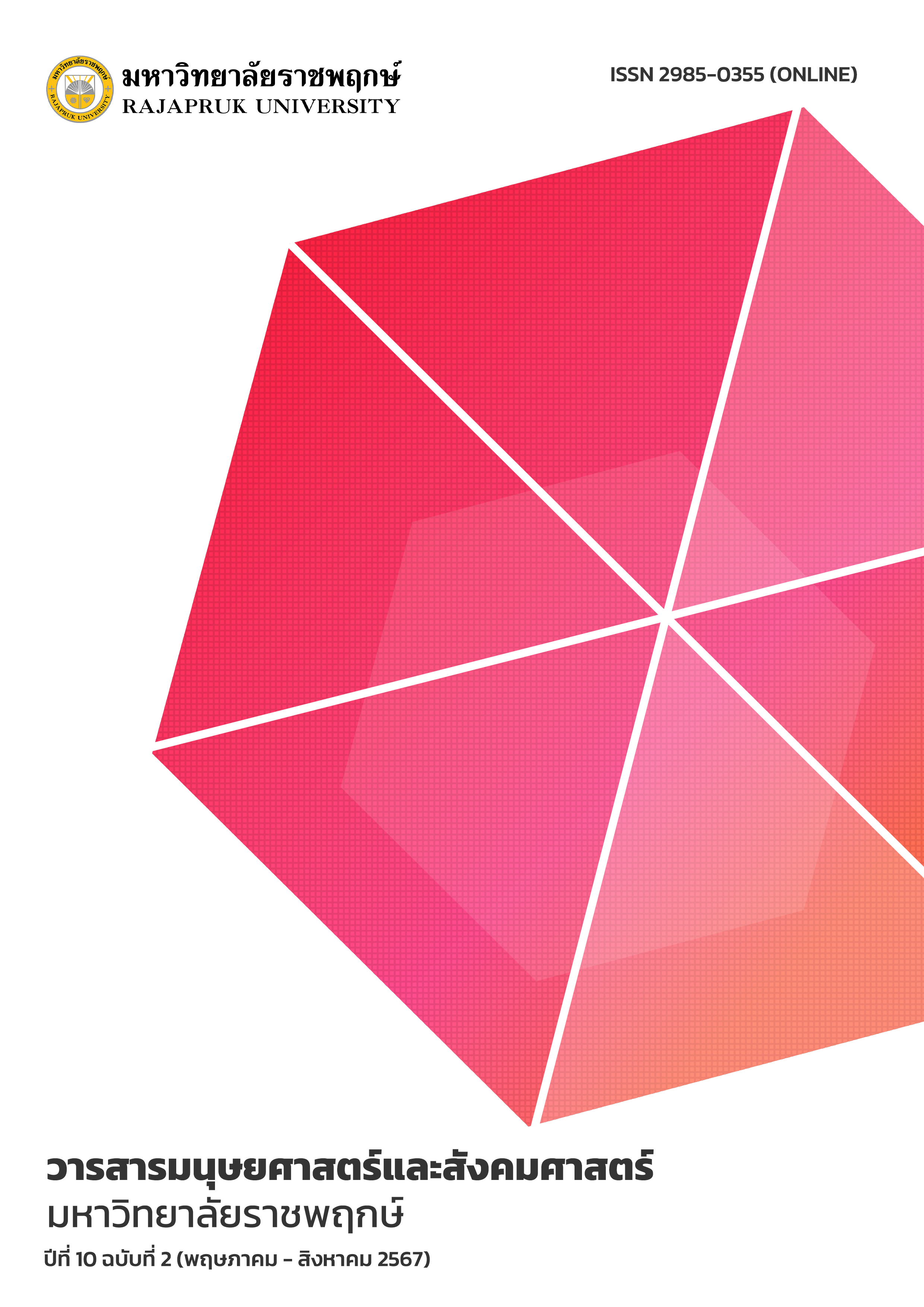Analysis of Complex Sentences used in Constitution of Kingdom of Thailand (B.E. 2560 (2017))
Main Article Content
Abstract
ABSTRACT
The Objective of this research were: 1) to analyze the characteristics of complex sentences and 2) To examine the relationship between the types of complex sentences and the content types in the Constitution of the Kingdom of Thailand, B. E. 2560, which consists of 279 articles and 2,479 sentences. The analysis is conducted using a table-based recording method for analyzing complex sentence structures and the relationship between complex sentence types and content types as research tools. The data is analyzed by frequency distribution and percentage calculation.
The results of the research revealed that 1) In the Constitution of the Kingdom of Thailand, B.E. 2560, each article is primarily composed of three types of complex sentences. The most frequent type is the adjective clause, followed by the noun clause, and the adverb clause, respectively. In noun clause, the subject may or may not appear in the sentence. Adjective clause may or may not include relative pronouns as sentence connectors. Adverb clause appear with relative adverb or preposition as sentence connectors, and they may or may not include preposition as sentence connectors. Since legal presentations require to present a large amount of legal regulations within a single sentence unit, and when sentences within each article contain multiple conditions and become lengthy, the omission of subjects and connectors is done to shorten the sentences without altering their intended meaning. 2) Regarding the analysis of the relationship between the types of complex sentences and content types in the Constitution of the Kingdom of Thailand, B.E. 2560, it is found that there are four content types, namely, command content, definition content, permission content, and notification content. The adjective clause is the most common in command and definition content. On the other hand, permission content and notification content are primarily composed of adverb clause. This is because each type of content exhibits specific characteristics, and the sentence structure varies according to the content type.
Article Details
References
กฤติกา ผลเกิด. (2541). การศึกษาวัจนลีลาของประมวลกฎหมายอาญา. วิทยานิพนธ์ อักษรศาสตร
มหาบัณฑิต สาขาวิชาภาษาไทย บัณฑิตวิทยาลัย มหาวิทยาลัยศิลปากร.
กาญจนา โรจนพานิช. (2539). ภาษากฎหมายไทย: การศึกษาแนวภาษาศาสตร์สังคม. รายงานผลงานวิจัย มหาวิทยาลัยศิลปากร.
กำชัย ทองหล่อ. (2547). หลักภาษาไทย. กรุงเทพฯ: รวมสาส์น.
จอมขวัญ สุทธินนท์. (2551). การศึกษาโครงสร้างประโยคความซ้อนในผลงานแปลและเรียบเรียงของระวี ภาวิไล. วิทยานิพนธ์ศิลปศาสตรมหาบัณฑิต สาขาวิชาภาษาไทย บัณฑิตวิทยาลัย มหาวิทยาลัยเกษตรศาสตร์.
ชาคริต อนันทราวัน. (2540). การใช้ภาษาในกฎหมายรัฐธรรมนูญ. กรุงเทพฯ: โอเดียนสโตร์.
ณัฐกร วิทิตานนท์. (2553). หลักรัฐธรรมนูญเบื้องต้น. กรุงเทพฯ: จุฬาลงกรณ์มหาวิทยาลัย.
ธานินทร์ กรัยวิเชียร. (2527). ภาษากฎหมายไทย. พิมพ์ครั้งที่ 5. กรุงเทพฯ: ชวนพิมพ์.
ปณิธาน บรรณาธรรม. (2546). เอกสารประกอบการสอนรายวิชา ภาษาเฉพาะกิจ. กรุงเทพฯ: สถาบันราชภัฏสวนสุนันทา.
มลุลี พรโชคชัย. (2538). การศึกษาวัจนลีลาของประมวลกฎหมายแพ่งและพาณิชย์ไทย. วิทยานิพนธ์อักษรศาสตรมหาบัณฑิต สาขาวิชาภาษาศาสตร์ บัณฑิตวิทยาลัย จุฬาลงกรณ์มหาวิทยาลัย.
ยุทธชัย วิธีกล. (2546). การใช้คลังข้อมูลภาษากฎหมายไทยในการแปลเอกสารกฎหมายจากภาษาอังกฤษเป็นภาษาไทย. สารนิพนธ์อักษรศาสตรมหาบัณฑิต สาขาวิชาการแปลและการล่าม คณะอักษรศาสตร์ จุฬาลงกรณ์มหาวิทยาลัย.
รัฐธรรมนูญแห่งราชอาณาจักรไทย พ.ศ. 2560. (2560, 6 เมษายน). ราชกิจจานุเบกษา. เล่ม 134 ตอนที่ 40 ก. หน้า 1-90. (ประชากร)
วิชา มหาคุณ. (2527). เอกลักษณของภาษากฎหมายไทย. ดุลพาห, 31(5): 158-167.
อุปกิตศิลปสาร, พระยา. (2544). หลักภาษาไทย: อักขรวิธี วจีวิภาค วากยสัมพันธ์ฉันทลักษณ์. พิมพ์ครั้งที่ 10. กรุงเทพฯ: ไทยวัฒนาพานิช.


